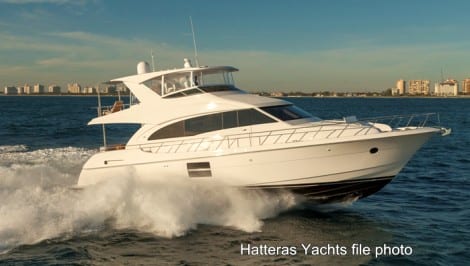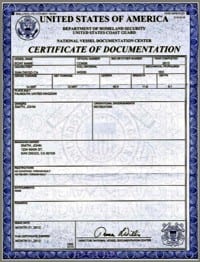 By Bob Currie, Vessel Examiner
By Bob Currie, Vessel Examiner
United States Coast Guard Auxiliary Station Galveston Flotilla.
How to Request a Vessel Safety Check
A Vessel Safety Check (VSC) is a United States Coast Guard vessel examination performed on a recreational boat by a certified recreational boat vessel examiner from either the US Coast Guard Auxiliary or the United States Power Squadrons (USPS). There is no charge for a VSC, and there are no consequences if you do not pass. There are several ways to request a US Coast Guard Vessel Safety Check. One way is to go online at https://cgaux.org/vsc and request a VSC.
The Station Galveston Flotilla of the US Coast Guard Auxiliary operates out of the USCG Station Galveston base on Galveston Island. They provide assistance to the Coast Guard by providing maritime observation patrols in Galveston Bay; by providing recreational boating vessel safety checks; and by working alongside Coast Guard members in maritime accident investigation, small boat training, watch standing, and property administration.
This is an automated system, and the system sends an email to the closest five vessel examiners. The first person to answer the request gets to do the VSC. That person copies the other examiners in an email to the boat owner. Another method is when a vessel examiner shows up to a boat ramp or marina and boat owners request an on the spot VSC. Another method is when marinas or boat clubs schedule an organized event where multiple vessel examiners perform several VSCs over a period of several hours. We call that a VE Day, and we had one this Saturday at the Lakewood Yacht Club during their Hatteras Rendezvous event.

Hatteras Rendezvous
Hatteras is the name of a yacht building company. They have been building luxury yachts for almost 60 years. These are world class yachts many of which are capable of circumnavigating the globe. Most have twin turbocharged diesel engines with as much as 1100 horsepower each. There are several Lakewood Yacht Club members who have Hatteras yachts, and once a year they have a get together called the Hatteras Rendezvous. During that event they attend presentations by boat vendors, presentations by the Coast Guard Auxiliary, and we also provide VSCs to members who request one. This Saturday we performed 16 VSCs for boat owners at the Hatteras Rendezvous. This was not the first VSC for any of the boats, but we were still able to share some valuable safety information for these highly experienced boat owners. The boats ranged in size from 39 feet to 74 feet. The length of the boat is important, because US Coast Guard regulations vary based on boat length. This column will address some of the differences based on boat length as well as equipment.
U.S. Vessel Documentation
The first thing anyone accompanying me on VSCs on large boats might notice is that none of them display TX numbers. There is a Texas boat registration decal displayed in the usual places, on each side on the forward half of the boat, but no numbers. Instead, each boat has the boat name and home port on their transom.  That is because most ocean going boats undergo U.S. Vessel Documentation. Vessel documentation is a national form of registration, but several states, including Texas, also require boats to have state registration. Documented boats in Texas display their Texas registration decals only. Documentation provides conclusive evidence of nationality for international purposes; only U.S. citizens can own U.S. documented vessels. In order to be documented, a vessel must measure at least five net tons. Deep draft vessels of more than 25 feet are likely to measure five net tons or more under the Simplified Measurement System. Your 26 foot flats boat isn’t likely to meet that figure.
That is because most ocean going boats undergo U.S. Vessel Documentation. Vessel documentation is a national form of registration, but several states, including Texas, also require boats to have state registration. Documented boats in Texas display their Texas registration decals only. Documentation provides conclusive evidence of nationality for international purposes; only U.S. citizens can own U.S. documented vessels. In order to be documented, a vessel must measure at least five net tons. Deep draft vessels of more than 25 feet are likely to measure five net tons or more under the Simplified Measurement System. Your 26 foot flats boat isn’t likely to meet that figure.
Personal Flotation Devices (PFD)
The PFD regulations for all boats 16 feet or longer is the same. You must have a wearable Coast guard approved PFD of suitable size for each person aboard as well as one type throwable PFD. All of the yachts I inspected met the minimum requirement, and some had many extra PFDs, as well as throw rings with lines attached. However, all PFDs are not equal. Rather, some are more suitable for far offshore use in that they have a greater buoyancy than near shore or inland type PFDs. In addition to additional buoyancy, Type I PFDs are more likely to hold an unconscious person’s head out of the water. Some inflatable PFDs are designed with much higher buoyancy ratings and are designed to hold an unconscious person’s head out of the water. I made a few upgrade recommendations to some of the boat owners.
Visual Distress Signals
There is a big difference between complying with USCG regulations and being found at sea. For many boaters, buying flares is an expense we endure every three years or so (they are good for 42 months from date of manufacture). Out of date flares is one of the most common reasons for not passing a USCG VSC. Every boat examined had the required three day/three night flare systems, with several having pistol fired rockets. Rockets increase the distance in which a vessel in distress can be seen. The effectiveness of a distress signal depends on whether or not an observer- who may be tired, careless, or untrained- can see and understand that the light is a distress signal. A distress signal must be big enough and bright enough for someone who may be miles away to positively identify and locate the source. All of the boat owners had more than the minimum USCG approved visual distress signals, but none that I examined had internationally approved SOLAS (Safety of Life at Sea) flares or rockets. The SOLAS flares are not required, but carrying them ups your chance of being rescued because they are 30 times brighter than USCG approved pyrotechnic devices. In addition, SOLAS parachute-equipped rockets can be seen many times further away than standard rockets and for a much longer period of time. When making my recommendation to the boat owners to upgrade their visual distress signals, I put it this way: Would you rather be seen from 5 miles away or 25 miles away in the event of an emergency?
Fire Extinguishers
Every boat we examined had a fire suppression system in their engine room. Yes, they all had engine rooms. Big ones. They all exceeded the USCG fire extinguisher requirements, which depend on boat length. There are three different boat lengths that determine the number of fire extinguishers required: (1) boats less than 26 feet, (2) boats 26 feet to less than 40 feet, and (3) boats 40 feet and longer. There are two basic sizes of USCG or UL approved fire extinguishers. Although the average boat owner would classify those two sizes as small and large, we classify them as B-1 and B-2, with B-2 being the larger size. Boats less than 26 feet are required to have one B-1 (smaller size) fire extinguisher or a fixed fire suppression system. Boats from 26 feet to less than 40 feet are required to have two B-1 or one B-2 (larger size) fire extinguisher or one B-1 if they also have a fixed system. Boats 40 feet or longer are required to have three B-1, one B-1 and one B-2, or a fixed system plus two B-1 or one B-2 fire extinguisher. All of the Hatteras boats had way more than they needed. Everyone understood the importance of having fire fighting equipment. Fire extinguishers must be USCG or United Laboratories (UL) approved, have indicators in the green, and not be expired. They are good for 12 years from date of manufacture. Expired fire extinguishers is probably the second most reason to not pass a VSC. As I told one boat owner last week, this fire extinguisher is good until 1996. Huh. What makes them USCG or UL approved? They say so on the label, of course, but they must be type ABC or BC. ABC fire extinguishers are approved for wood (Ash), flammable liquid (Boil) and chemical (C for chemical) fires.
Pollution and MARPOL Trash Placards
Boats 26 feet and longer with a machinery compartment must display an oily waste “pollution” placard, which tells persons on board to not dumpy oil or oily waste overboard. Boats 26 feet and over in length, operating in U.S. navigable waters, must display a MARPOL (maritime pollution) trash placard. Oceangoing boats 40 feet and over, like the Hatteras yachts we inspected, must also have a written trash disposal plan available onboard. I carry a simple fill-in-the-blanks form that meets the requirement in case I have a boat owner who needs the form.
Bell Requirement
Under a recent change, the Coast Guard has said a vessel 12 meters (39.4 feet) to less than 20 meters (65 feet) is no longer required to carry a bell on board. Bells become important in the fog. The old rules required ships 12 meters or longer to have a bell, and certain ships over a certain length to have a gong. When anchored in the fog ships, depending on their length, are required to sound their fog horn, followed by their bell, followed by a gong. The deeper the sound of the horn, bell, and gong, the bigger the ship. While the other inspectors and I were having our pre-inspection meeting, we overheard several boat owners discussing their new bell purchases. We didn’t have the heart to tell them that the bell is no longer required unless the boat was 65 feet or longer. One boat I inspected was 74 feet long, and he had a nice bell. I use a ship’s bell for my front doorbell. I will never actually need one, however.
Summary
Some of the Coast Guard recreational boat requirements change for longer boats. A free VSC from a Coast Guard approved vessel examiner, whether they are a member of the US Coast Guard Auxiliary or the US Power Squadrons, will ensure that you meet the regulations for your boat length. In addition, we will base further recommendations based on your area of operation, because sometimes meeting the minimum requirement doesn’t give you the peace of mind that upping your equipment does.
For more information on boating safety, please visit the Official Website of the U.S. Coast Guard’s Boating Safety Division at www.uscgboating.org. Questions about the US Coast Guard Auxiliary or our free Vessel Safety Check program may be directed to me at [email protected]. I am available to perform free Vessel Safety Checks, and I will come to your location to perform them. SAFE BOATING!
[4-8-2019]

 Posted in
Posted in 























